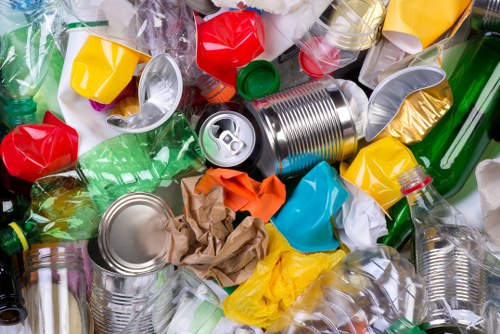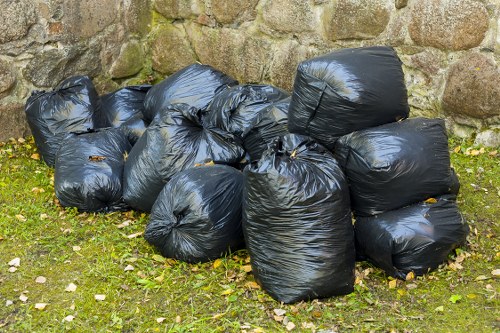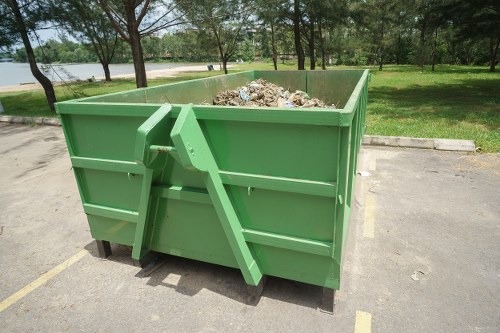Efficient Construction Waste Clearance in Temple: Ensuring a Sustainable Sacred Space
Understanding Construction Waste Clearance in Temples

Construction projects in temples are not just about building structures; they are about preserving sanctity and ensuring sustainability. Effective construction waste clearance in temples plays a pivotal role in maintaining the sacred ambiance while adhering to environmental standards.
Temples, being places of worship and community gathering, require meticulous planning and execution during construction phases. Proper waste management ensures that the spiritual essence remains untainted while modernizing or expanding the temple infrastructure.
Implementing a robust waste clearance system helps in minimizing the environmental impact, promoting recycling, and ensuring that the temple remains a pristine place for worshippers and visitors alike.
The Importance of Effective Waste Management

Effective waste clearance is crucial in temple construction for several reasons. Firstly, it helps in reducing the carbon footprint by ensuring that construction materials are disposed of responsibly.
Secondly, temples often attract a large number of visitors, and maintaining cleanliness is essential for their comfort and spiritual experience. Proper waste management ensures that the temple grounds remain clean and inviting.
Moreover, many temples are historical landmarks; hence, preserving their integrity by managing construction waste is vital to maintaining their cultural and architectural significance.
Types of Construction Waste Generated in Temple Projects

Construction projects in temples generate various types of waste, each requiring specific handling and disposal methods. Common types include:
- Debris: Stones, bricks, and other demolition waste.
- Wood and Metals: From scaffolding, frames, and other structural elements.
- Hazardous Materials: Paints, solvents, and other chemicals used during construction.
Proper identification and segregation of these wastes are essential for effective clearance and recycling.
Implementing categorization protocols ensures that recyclable materials are processed appropriately, reducing the overall environmental impact.
Additionally, handling hazardous materials with care prevents contamination and preserves the sanctity of the temple environment.
Best Practices for Construction Waste Clearance in Temples

Adopting best practices in construction waste clearance ensures that temple projects are environmentally friendly and sustainable. Key practices include:
- Waste Segregation: Sorting waste at the source to facilitate recycling and proper disposal.
- Recycling and Reuse: Repurposing materials like wood, metals, and stones to minimize waste.
- Safe Disposal of Hazardous Waste: Ensuring that hazardous materials are disposed of in compliance with environmental regulations.
Regular training for construction workers on waste management protocols enhances the efficiency of waste clearance operations.
Collaboration with certified waste disposal companies ensures that all waste is handled responsibly and sustainably.
Moreover, implementing monitoring systems helps in tracking waste generation and clearance, promoting continuous improvement.
Environmental and Spiritual Benefits

Effective construction waste clearance not only benefits the environment but also aligns with the spiritual values of temples. By maintaining cleanliness and reducing pollution, temples create a harmonious space conducive to worship and meditation.
Environmentally sustainable practices reflect the temple's commitment to stewardship of the Earth, resonating with the spiritual teachings of harmony and respect for nature.
Additionally, showcasing responsible waste management sets a positive example for the community, encouraging others to adopt similar sustainable practices.
Regulatory Compliance and Standards
Adhering to local and national regulations is paramount in construction waste clearance for temples. Compliance ensures that waste management practices meet environmental standards and avoid legal repercussions.
Understanding and following the guidelines set by environmental protection agencies help in maintaining proper documentation and reporting for waste disposal.
Engaging with regulatory bodies during the planning phase of temple construction projects facilitates smooth approval processes and ensures that all waste management protocols are in place.
Choosing the Right Waste Clearance Services
Selecting a reliable waste clearance service is essential for the success of temple construction projects. Factors to consider include:
- Experience: Proven track record in managing construction waste, especially in religious or historical sites.
- Certification: Compliance with environmental and safety standards.
- Comprehensive Services: From waste collection and segregation to recycling and disposal.
Partnering with experienced waste management professionals ensures that all aspects of waste clearance are handled efficiently and responsibly.
Specialized services tailored to the unique needs of temples can address specific challenges, such as handling delicate materials or maintaining the sanctity of the site.
Implementing Sustainable Practices
Incorporating sustainability into construction waste clearance enhances the long-term benefits for temples and the surrounding community. Sustainable practices include:
- Reducing Waste Generation: Optimizing construction processes to minimize waste production.
- Using Eco-friendly Materials: Selecting materials that are recyclable or biodegradable.
- Promoting Recycling Programs: Encouraging the reuse of materials within the temple or donating to local recycling centers.
These practices not only contribute to environmental conservation but also uphold the spiritual values of the temple by promoting harmony and respect for nature.
Engaging the community in sustainability initiatives fosters a collective effort towards maintaining a clean and sacred environment.
Case Studies: Successful Waste Clearance in Temples
Examining successful implementations of construction waste clearance in temples provides valuable insights and best practices. For instance, the XYZ Temple project incorporated advanced waste segregation techniques, resulting in a 70% reduction in landfill waste.
Another example is the ABC Temple, which partnered with local recycling centers to repurpose construction debris, significantly lowering their environmental impact.
These case studies highlight the effectiveness of strategic planning and collaboration with waste management experts in achieving sustainable outcomes.
Challenges and Solutions
Managing construction waste in temple projects comes with its set of challenges, such as limited space for waste storage, handling hazardous materials, and ensuring compliance with regulations.
Solutions include:
- Efficient Space Management: Utilizing compact and secure waste storage units to maximize space.
- Training and Education: Equipping workers with the knowledge to handle and segregate waste properly.
- Regular Audits: Conducting periodic inspections to ensure adherence to waste management protocols.
Addressing these challenges proactively ensures smooth waste clearance processes and maintains the integrity of the temple project.
Implementing technology-driven solutions, such as waste tracking software, can enhance the efficiency and transparency of waste management efforts.
The Role of Technology in Waste Clearance
Modern technology plays a significant role in enhancing the effectiveness of construction waste clearance in temples. Tools such as waste tracking systems, automated sorting machines, and data analytics help in optimizing waste management processes.
These technologies enable precise monitoring of waste generation, facilitating timely interventions and ensuring compliance with environmental standards.
Moreover, integrating sustainable technologies aligns with the temple's mission to preserve the environment, showcasing a commitment to innovation and responsibility.
Community Engagement and Awareness
Engaging the local community in waste clearance initiatives fosters a collective sense of responsibility and support for temple projects. Awareness campaigns and educational programs can highlight the importance of sustainable waste management.
Involving volunteers and local organizations in waste clearance efforts enhances community bonds and promotes a shared vision of maintaining a clean and sacred temple environment.
Community participation also provides valuable feedback and ideas, leading to more effective and inclusive waste management strategies.
Long-term Sustainability and Maintenance
Ensuring long-term sustainability of waste clearance practices involves regular maintenance, continuous improvement, and adaptability to changing environmental regulations.
Establishing a dedicated waste management team within the temple's administrative structure ensures ongoing oversight and accountability.
Periodic reviews and updates of waste management protocols help in adapting to new challenges and incorporating best practices, maintaining the temple's commitment to environmental stewardship.
Conclusion: Embracing Sustainable Waste Clearance in Temples
Effective construction waste clearance in temples is essential for preserving the sanctity, sustainability, and environmental responsibility of these sacred spaces. By adopting best practices, leveraging technology, and engaging the community, temples can ensure that their construction and expansion projects are both respectful to tradition and mindful of modern environmental standards.
Embracing sustainable waste management not only enhances the temple's reputation but also contributes to a cleaner, healthier environment for all.
Contact us today to learn more about our specialized construction waste clearance services tailored for temple projects and ensure your sacred space remains pristine and sustainable.